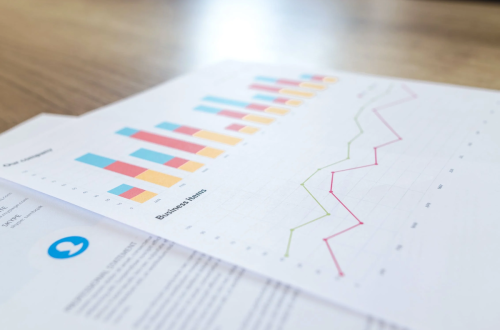
The Ethics of AI: Bias, Privacy, and Societal Impacts
In the bustling digital age, Artificial Intelligence (AI) has emerged from the shadows of futuristic movies to be a cornerstone of modern life. AI is everywhere, from predicting what song you’d like to hear next on Spotify to streamlining operations in factories. However, as we increasingly delegate tasks and decisions to machines, ethical considerations like bias, privacy, and societal impacts rear their heads.
AI and Bias: Why Robots Aren’t Always Neutral
Imagine you’re training a puppy to fetch a red ball. If you only throw red balls for the puppy and reward it when it retrieves them, it’ll always bring back red balls. Similarly, when we feed AI systems with data, they “learn” from it and base their decisions on it. But what if our data needs to be more diverse and inclusive?

Recruitment
Example: A company designed an AI system for recruitment. The company historically hired more males than females. So, when this AI analysed past data, it began to favour male candidates over female ones, not because of merit but because of a biased data set.
Takeaway: AI doesn’t possess inherent biases. They mirror the biases in the data they’re trained on. It’s vital to ensure diverse, comprehensive data training to prevent perpetuating historical biases.
Housing and Loans
Example: Imagine a lending company using an AI model to determine if an individual is eligible for a loan. Suppose the data used to train the AI system is predominantly from affluent neighbourhoods. In that case, the system might unfairly decline applications from people living in less wealthy areas, even if they’re financially capable of managing the loan.
Takeaway: Bias in AI training data can perpetuate socio-economic disparities, making it crucial to source diverse and representative data sets.

Healthcare
Example: AI is often used to diagnose diseases or recommend treatments. If an AI is predominantly trained on data from one racial or ethnic group, it might not perform as effectively for patients from other backgrounds. A real-world example is how specific AI models trained predominantly on Caucasian skin struggled to identify skin conditions on darker skin tones.
Takeaway: Ensuring diverse representation in medical AI training data is critical to delivering equitable healthcare for all.
AI and Privacy: Is Your Virtual Assistant Too Nosy?
You’ve probably asked Siri, Alexa, or Google Assistant to play your favourite song or set an alarm. While it’s undeniably convenient, have you paused to wonder what happens to your voice recordings or the personal data you share?
Privacy
Example: Think of AI like a diligent student taking notes in class. Every question you ask, or preference you show becomes a note. Over time, these notes can sketch an eerily accurate portrait of you – your likes, dislikes, routines, and more. While this can be used to improve user experience, it also poses privacy concerns. Who else has access to this portrait? Can it be misused?
Takeaway: AI’s ability to process and remember vast amounts of personal data can be a double-edged sword. As users, it’s crucial to know where our data goes and how it’s used. As developers, building trust means ensuring robust data protection measures.
Shopping Habits
Example: Let’s say you’re browsing an online store for a surprise gift. Later, when your family member uses the same computer or a linked device, they see advertisements for the item you were looking at.
Takeaway: AI-driven targeted advertisements can infringe on personal privacy, emphasising the need for more robust data protection measures.
Fitness Trackers
Example: Many of us use fitness trackers to monitor our health. These devices can tell when you’re sleeping, your heart rate, and even your location during a morning run. But what if this data, instead of helping you, ends up being sold to insurance companies, who then adjust your rates based on the information?
Takeaway: Personal health data collected by AI devices must be protected to prevent misuse affecting users’ finances or privacy.

AI and Societal Impacts: More Than Just Tech
Introducing AI can ripple across society in myriad ways, from job markets to how we perceive human-machine relationships.
Transport System
Example: A town introduces AI-powered buses. These self-driving buses are efficient, reducing commute times and accidents. However, all bus drivers in that town lose their jobs. While the technology advances, a societal challenge surfaces: How do we transition these workers into new roles or industries?
Takeaway: AI doesn’t exist in a vacuum. Its integration can lead to societal shifts, requiring foresight and planning to ensure no one is left behind.

Education
Example: Schools increasingly use AI to personalise learning, analysing students’ strengths and weaknesses. If an AI system determines a child struggles with mathematics in 2nd grade, they might be steered away from math-intensive subjects throughout their schooling.
Takeaway: AI in education needs careful calibration to avoid prematurely limiting students’ potential based on early assessments.
Entertainment
Example: AI can now generate music and paintings and even write scripts. Who gets the credit if an AI writes a hit song? The programmer? The AI? And what does it mean for human artists trying to make a living?
Takeaway: The introduction of AI in creative industries prompts questions about authorship, compensation, and the future role of human creators.
Wrapping Up
AI heralds a future with potential, and yet it’s riddled with ethical dilemmas. As this technology becomes inseparable from our daily existence, confronting issues of bias, privacy, and societal impact is imperative. We should actively engage in these critical conversations to unlock AI’s promise without compromising our values. The responsibility rests on our shoulders to shape this evolving narrative and set the guiding principles for a harmonious coexistence between humanity and machines.




